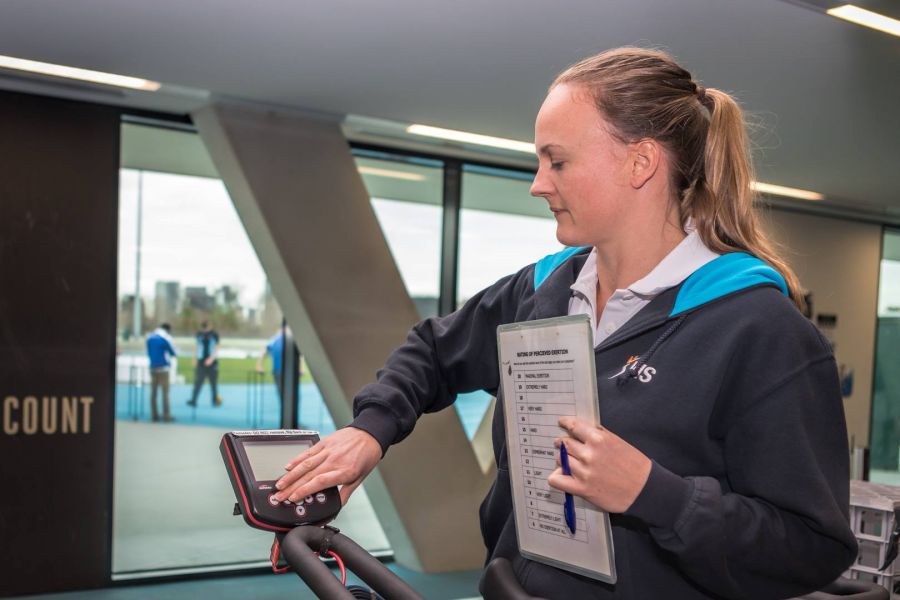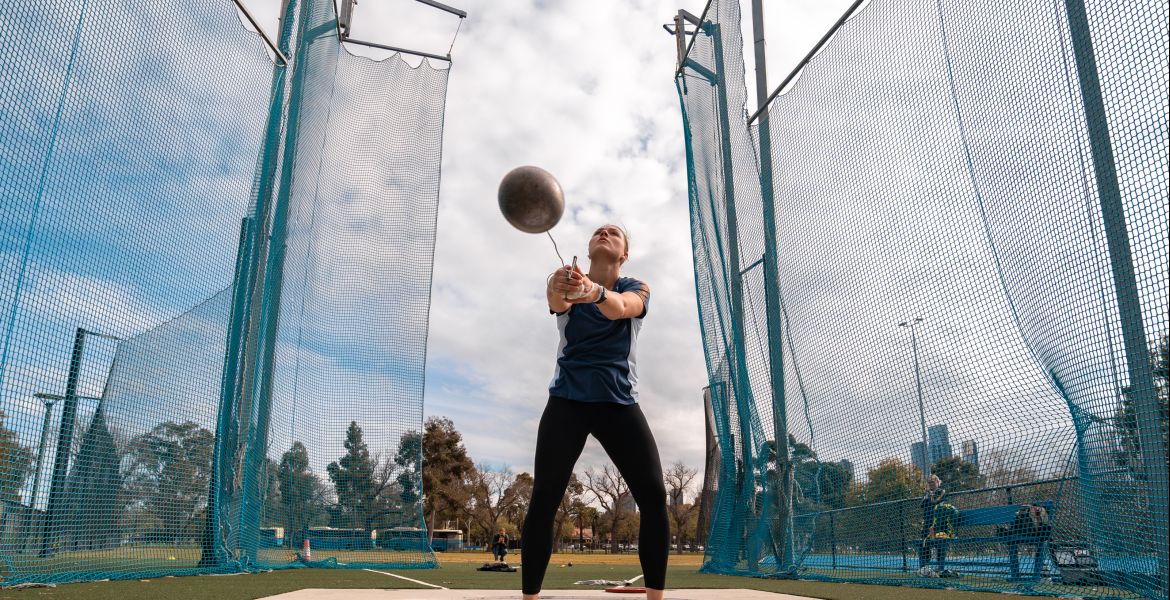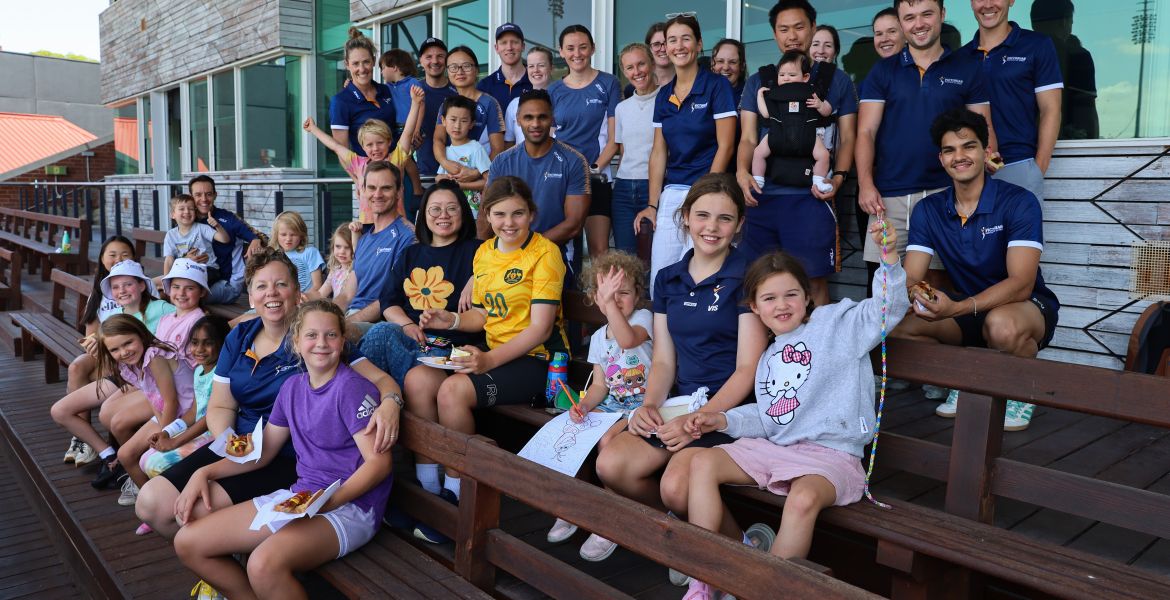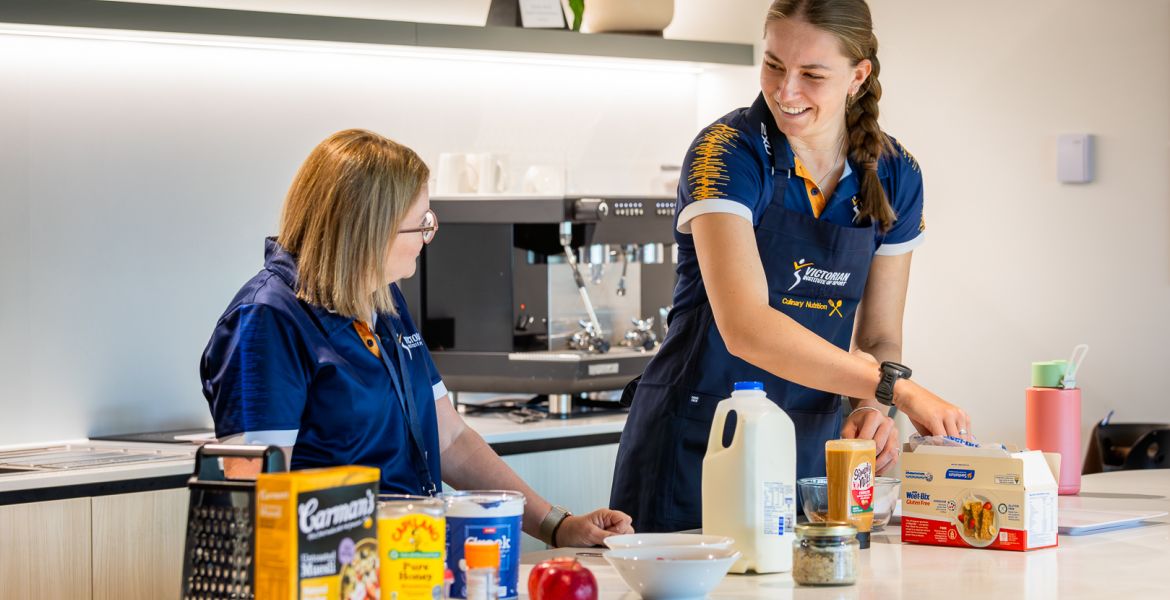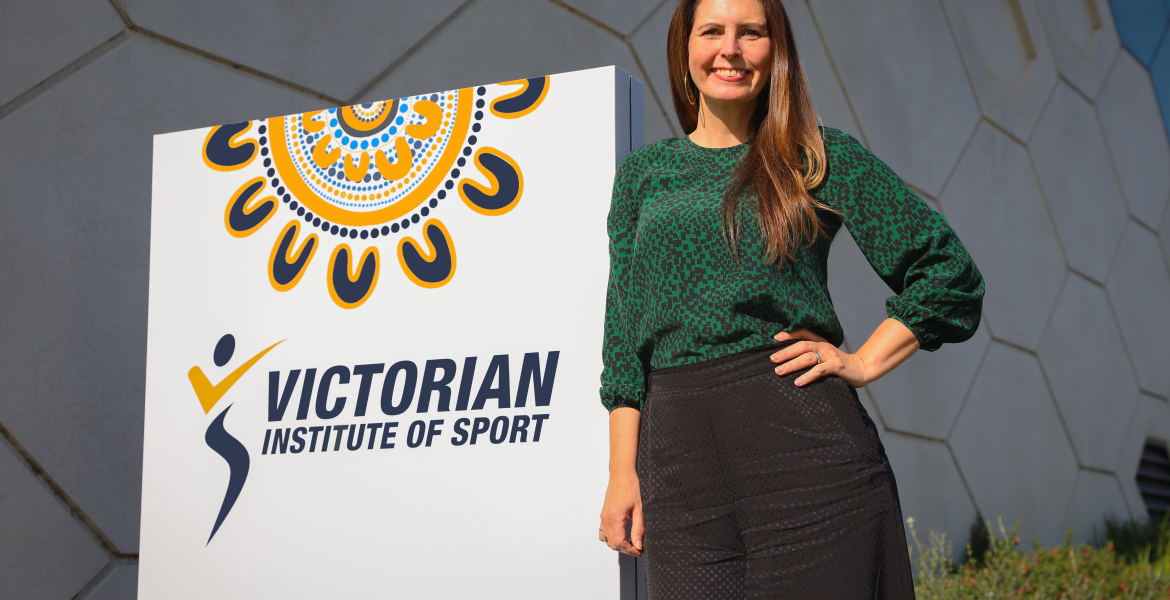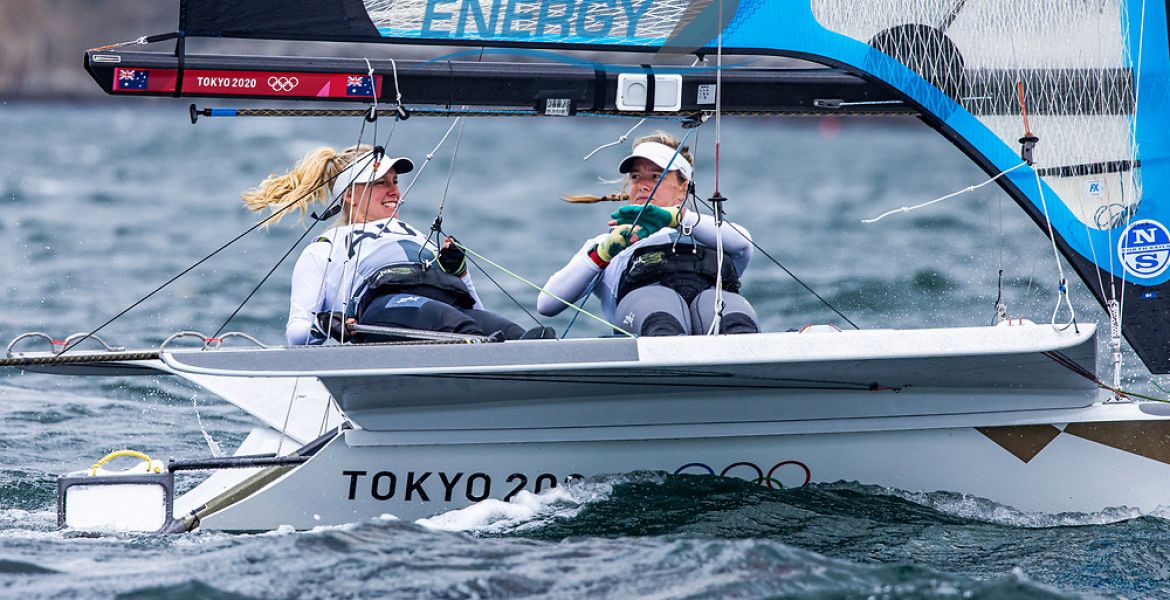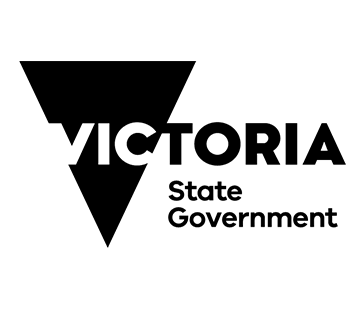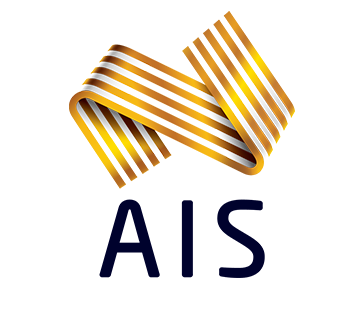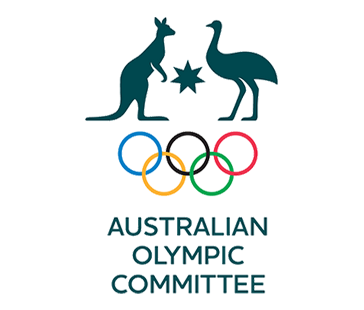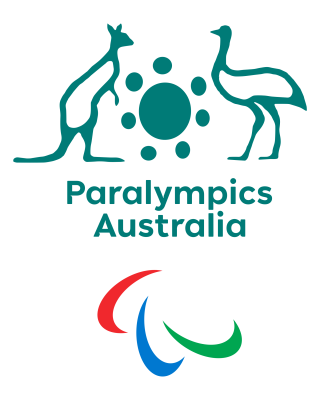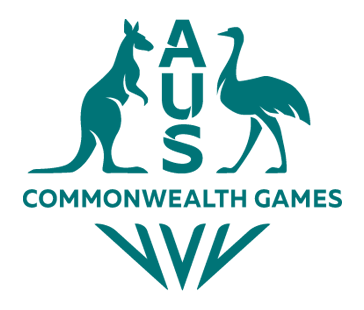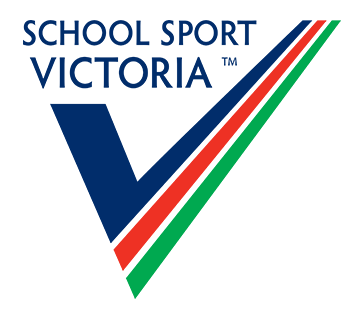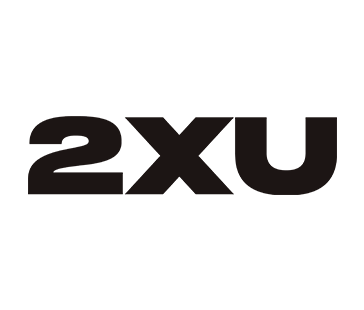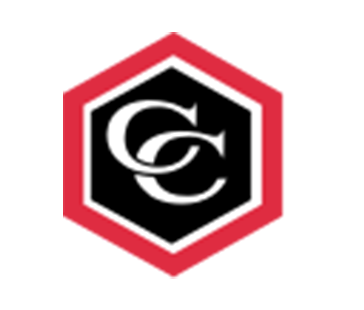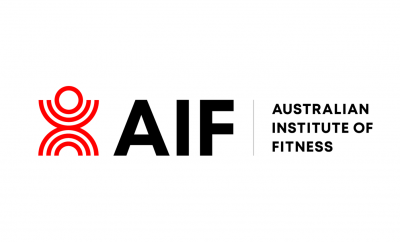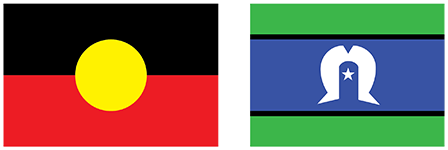One of those experts is sport scientist, Sylvie Withers, who has worked with a number of Olympic and Paralympic athletes across a range of different sports during her 13 years at the VIS. Currently she works with the VIS Sailing and Diving programs.
Withers is also very passionate about women’s health and last year organised a series of workshops at the VIS for female athletes. The workshops was a resounding success and sparked conversations among athletes and staff of how the VIS can continue to support their female athletes in the best way possible.
She works with heat and environmental adaptations in athletes assigning training programs for athletes, which help them prepare for a variety of competition conditions. This includes training sessions in the newly built VIS Climate Chamber, which will help athletes prepare for the hot and humid conditions they are set to face in Tokyo.
We caught up with Sylvie to see how she has adapted to these challenging times.
How are you able to still continue servicing athletes from home?
SW: Fortunately technology has come a long in way terms of remote servicing. The availability and quality of tech such as smart phones/watches, heart rate monitors and power meters mean we can still monitor and prescribe sessions with accuracy in most circumstances. I use TrainingPeaks as a prescription and monitoring tool for the sailing program which enables me to keep track of how an athlete is training. I use this even when we are not in isolation so that part of servicing hasn’t changed.
With no competitions in the near future, a lot of work has gone into shifting the training focus and getting creative with prescription so that each athlete has a purpose to their training In a lot of respects we have had to shift our servicing back to the foundations, rather than focusing on those 1%ers that can make all the difference at the pointy end of the season.
How are you able to perform regular testing on athletes without them being at the VIS?
SW: Testing is a lot harder without the athletes coming into the VIS to use our specialised equipment and gold standard protocols. Everything from taking skin-folds for body composition assessment to running VO2max tests requires close proximity and is therefore off limits for the foreseeable future. However, there is also less need for high end testing during this period as a lot of athletes have moved into a maintenance phase of their training. We can still gauge their progress through training and wellness monitoring to make sure they are staying on track.
What has been some of your biggest challenges from a Sport Science point of view?
SW: As scientists we do tend to spend a lot of time crunching numbers on a computer, but it’s getting out in the field that drives the work we do. We have had to adapt sessions depending on what equipment each individual athlete has access to. Conducting virtual exercise sessions and virtual racing, like Zwift, offer some level of personal interaction for the athletes but it’s not the same as sweating out with your team standing beside you.
Our Sailors are keeping each other honest during the self isolation period with this online training session! ⛵ #StayHealthy #StayFit @AUSOlympicTeam @Olympics @AustSail @theAIS pic.twitter.com/xCq86hvKJw
— Victorian Institute of Sport (@VicInstSport) March 27, 2020
Not having face to face contact with colleagues has been another challenge. We work in an open plan setting at the VIS so we are constantly bouncing ideas around and learning from each other.
Have you used this time to trial new things?
SW: Now that we have settled into the remote servicing routine, it does open up some extra time to explore areas that have been put on the back-burner during the manic final push toward the Olympics. I have a real interest in female athlete considerations and menstrual impacts on performance, so it has been a great opportunity to put some extra time getting stuck into the research.
We have a greater opportunity to provide more education and virtual workshops that would normally be difficult due to time and availability constraints. From sleep to recovery practices to menstrual tracking, it’s a great time for athletes to try new strategies and fine tune their routines.
Last year, Sylvie conducted workshops during Women’s Health Week for our athletes and coaches. (See below)
There has also been a lot more collaboration across different sports and the entire National Institute Network in terms of sharing learning's and experiences throughout this period. We now have a second run at preparing our Olympic athletes for Tokyo. We have taken the time to evaluate what we were able to achieve over the past 12 months and configure a new plan for the second take. We usually have to wait 4 years for the opportunity to do things differently, so it is exciting to have that second chance now.

